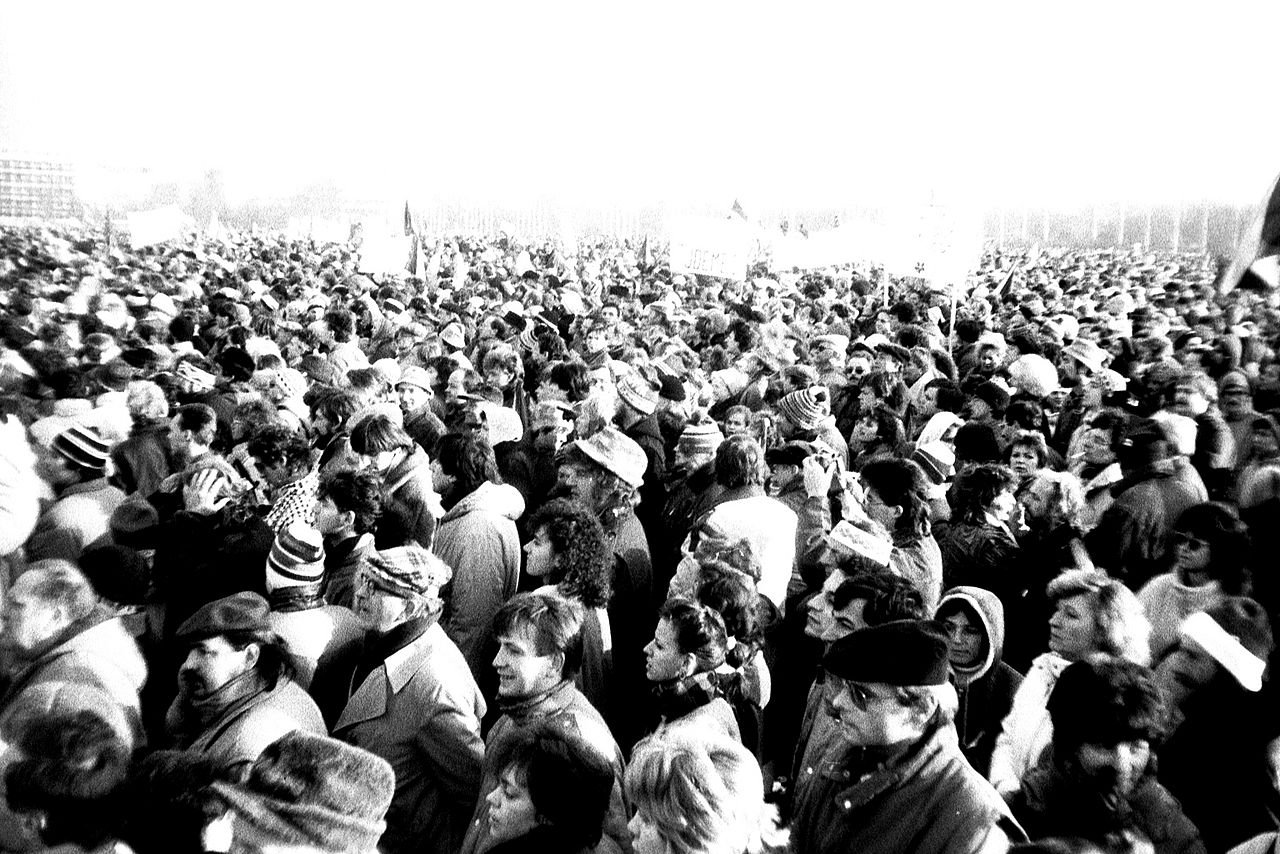On November 17, 1989, the Velvet Revolution began in Czechoslovakia, marking a non-violent transition of power and the end of 41 years of Communist rule in the country. This historic event was sparked by a peaceful student demonstration in Prague and quickly gained momentum, drawing widespread participation across the nation.
The Velvet Revolution was a significant part of the larger wave of anti-communist uprisings that swept across Eastern Europe during the late 1980s. It played a critical role in the fall of the Iron Curtain and the subsequent dissolution of the Soviet Union.
The roots of the Velvet Revolution can be traced back to the repressive policies of the Communist regime in Czechoslovakia. Under the leadership of General Secretary Gustav Husak, the country had been under strict control since the Soviet-led invasion in 1968. Dissent and opposition were suppressed, and the economy stagnated under centralized planning.
However, cracks in the regime began to appear in the late 1980s. The Soviet Union, under the leadership of Mikhail Gorbachev, had initiated a policy of glasnost (openness) and perestroika (restructuring), which allowed for greater political and economic freedoms. This newfound openness in the Soviet Union inspired people across Eastern Europe to demand similar reforms.
In Czechoslovakia, the catalyst for the Velvet Revolution was a peaceful student demonstration in Prague on November 17, 1989. The students were commemorating the 50th anniversary of the violent suppression of a previous student protest against Nazi occupation. However, the demonstration turned into a massive protest against the Communist regime, with participants demanding political and economic reforms.
The response from the authorities was swift and brutal. The police violently dispersed the protesters, sparking outrage among the general population. News of the crackdown spread quickly, and people from all walks of life began to join the protests in solidarity with the students.
Over the following days and weeks, the protests grew in size and intensity. Workers from various industries went on strike, demanding an end to the Communist regime. The dissident movement, led by figures such as Vaclav Havel and Alexander Dubcek, gained widespread support and became the voice of the revolution.
The Communist government, faced with mounting pressure, attempted to negotiate with the opposition. However, their efforts were in vain, as the demands for change were too strong to ignore. The regime finally collapsed on December 10, 1989, when President Gustav Husak appointed a new government composed of non-Communist ministers.
The Velvet Revolution brought about significant changes in Czechoslovakia. The country transitioned to a democratic system, with Vaclav Havel becoming the first non-Communist president in over four decades. Political and economic reforms were implemented, and the country began its journey towards integration with the European Union.
The impact of the Velvet Revolution extended beyond Czechoslovakia. It served as an inspiration for other anti-communist movements in Eastern Europe, such as the fall of the Berlin Wall in Germany. The events of 1989 paved the way for the reunification of Europe and the end of the Cold War.
Today, the Velvet Revolution is remembered as a pivotal moment in Czechoslovakian history. It symbolizes the power of peaceful resistance and the triumph of democracy over authoritarian rule. The legacy of the revolution continues to shape the political and social landscape of the Czech Republic and Slovakia.
For more information on the Velvet Revolution and its historical significance, you can visit the following external references:
The Velvet Revolution in Czechoslovakia on November 17, 1989, marked a turning point in history. It was a peaceful uprising that led to the end of Communist rule and played a significant role in the fall of the Iron Curtain. The revolution serves as a reminder of the power of the people and their ability to bring about change through non-violent means.

